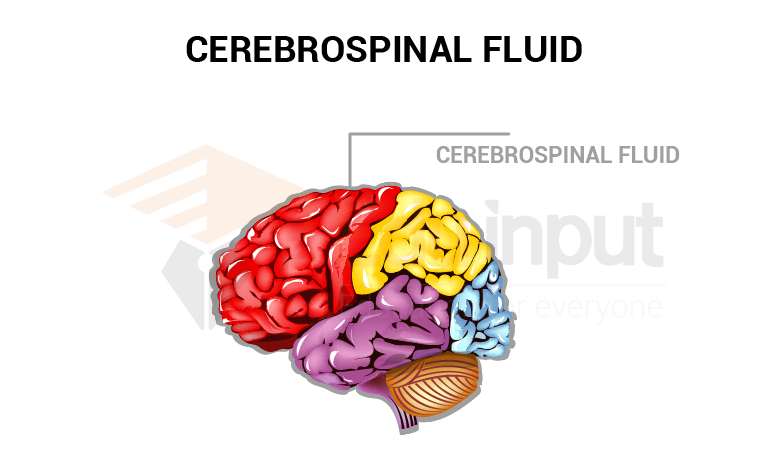Cerebrospinal Fluid (CSF)-Composition, Characteristics, and Functions
Cerebrospinal fluid (CSF) is a clear liquid found inside the ventricles of the brain and spinal cord. It helps keep the brain moist and cushions the nerves and blood vessels within the central nervous system. CSF also plays an important role in helping the body fight infection.
It is a waste product produced by the brain and moves through the spaces between cells and into the bloodstream. The CSF helps regulate pressure in the brain and the spinal cord protects nerve cells from injury and cleanses substances from the brain. It also contains hormones and antibodies that act as messengers between the brain and other parts of the body.

Composition Of Cerebrospinal Fluid (CSF)
Cerebrospinal Fluid has the following content:
| CSF | Blood | |
| pH | 7.33 | 7.41 |
| Osmolarity | 295 mOsm/L | 295 mOsm/L |
| Glucose (fasting) | 2.5 – 4.5 mmol/L | 3.0 – 5.0 mmol/L |
| Protein | 200 – 400 mg/L | 60 – 80 g/L |
| Sodium | 144 – 152 mmol/L | 135 – 145 mmol/L |
| Potassium | 2.0 – 3.0 mmol/L | 3.8 – 5.0 mmol/L |
| Chloride | 123 -128 mmol/L | 95 – 105 mmol/L |
| Calcium | 1.1 – 1.3 mmol/L | 2.2 – 2.6 mmol/L |
| Urea | 2.0 – 7.0 mmol/L | 2.5 – 6.5 mmol/L |
Characteristic of CSF
1. Cerebrospinal fluid (CSF) is a clear liquid produced by the brain and spinal cord. CSF circulates around the brain and spinal cord, nourishing these structures and helping them function properly. It helps protect the brain and spinal cord from injury and disease.
2. CSF is composed primarily of water, protein, glucose, sodium, chloride, bicarbonate, and small amounts of other substances.
3. CSF is secreted by specialized cells called ependymal cells lining the ventricles of the brain and spinal cord; it then flows out of the ventricles through tiny channels called aquaporins.
4. CSF is constantly being reabsorbed back into the bloodstream at the choroid plexus, where it mixes with blood plasma.
5. CSF production begins before birth and continues throughout life.
6. CSF is normally about 100 milliliters per day.
7. CSF is produced by the body’s largest organ, the brain.
8. The amount of CSF varies slightly among individuals.
9. CSF is not considered a true lymphatic system.
10. CSF is produced in the brain and travels along the central nervous system to the spinal cord and then down the spinal canal to exit the body via the spinal column.
11. CSF is absorbed into the bloodstream at the base of the skull.
12. CSF is produced and distributed by the brain and spinal cord.
13. CSF is a clear, colorless, odorless, tasteless, isotonic solution.
14. CSF is a sterile, non-colloidal fluid.
Functions of Cerebrospinal Fluid (CSF)
The major functions of CSF are listed.
● CSF serves as a hydraulic shock absorber. It can diffuse the force from a hard blow to the skull that might otherwise cause severe injury.
● It helps in the regulation of intracranial pressure.
● It is believed that CSF influences hunger sensation and eating behaviors.

 written by
written by 




Leave a Reply